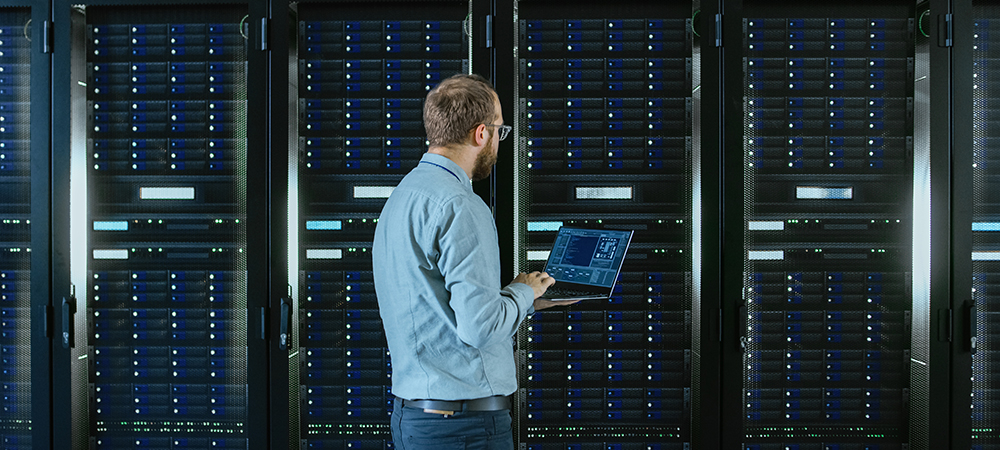Meeting the technology demands of modern data centres can be challenging and complex, particularly as the rate of digitalisation increases. Herman Chan, President, Sunbird Software, discusses the benefits of second-generation DCIM and tells us why data centre managers are it to help meet their corporate sustainability goals.

What is second-generation DCIM?
Second-generation Data Center Infrastructure Management (DCIM) software, also known as DCIM G2, is the class of software that has emerged from legacy DCIM products to dramatically simplify data centre management.
This next generation of DCIM resolves the shortfall of functionality experienced with legacy DCIM tools. It provides the capabilities and features data centre managers want along with an elegant web-based user interface that gets widely adopted.
What is driving the need for second-generation DCIM?
Modern data centres are constantly changing and traditional management tools no longer get the job done.
Intelligent rack PDUs and other smart devices with sensors are becoming ubiquitous. These devices collect a massive volume and variety of data that must be monitored and analysed.
Data centres are now distributed across many locations such as colocation, Edge and retail, making a remote management tool a must-have.
Organisations are consolidating data centres and virtualising servers to increase efficiency and they need a tool to enable them to do so intelligently.
Data centre managers need tools that can integrate seamlessly with each other to drive automation that boosts productivity and increases the accuracy of their data.
Finally, there is increased consumer education of lackluster experience with first-generation DCIM tools. When shopping for DCIM software, data centre professionals can more easily spot the difference.
Today’s data centre managers have moved beyond traditional data centre management tools. They expect solutions that meet the requirements of modern data centre environments and leverage new technology to maintain uptime, drive efficiency and boost productivity. They need second-generation DCIM that is easy, fast and complete.
What are the pain points and pitfalls of first-generation DCIM?
When Sunbird was formed, we spoke to many customers of first-generation DCIM tools to learn about their pain points. Interestingly, we kept hearing the same stories.
The tools are difficult to deploy or require additional clients. Critical features are missing, incomplete, or do not work as expected. Features are modularised and require additional purchases. The user interfaces are outdated and hard to use. The performance is slow. They cannot scale to accommodate the number of devices in modern data centres. The support is terrible.
We listened to these pain points and wanted to do something about them. That’s when second-generation DCIM was created.
What sets second-generation DCIM apart?
While legacy DCIM tools are adequate for some of the most common daily tasks faced by today’s data centre managers and operators, second-generation DCIM improves on its first-generation counterpart with enhanced versions of the monitoring and operations features in legacy DCIM tools as well as new functionality for modern data centre environments.
Second-generation DCIM deploys in half the time of first-generation tools and requires significantly fewer resources for a fast return on investment.
It’s extremely easy to use with an elegant, intuitive design that simplifies a data centre manager’s most common tasks.
It provides zero-configuration analytics in which pre-built dashboards, charts, reports and visual analytics for the most important data centre KPIs are available out of the box. Shared dashboards and team views enable data-driven collaboration and smarter decision-making.
Second-generation DCIM comes with free APIs and connectors that make it easy to drive automation via integration with other tools.
It offers extreme scalability that can handle millions of assets, billions of data points per day and thousands of users.
Other key pillars of second-generation DCIM are that it offers full suite of capabilities for complete data centre management, it is vendor-agnostic and works with virtually all third-party meters, sensors and software, and it leverages AI and Machine Learning capabilities to help optimise the data centre.
What tools can be integrated with second-generation DCIM?
Second-generation DCIM features free APIs and customer-configurable connectors that enable integration with most other tools that have the appropriate APIs. This automation via integration eliminates double entry and reduces manual effort.
For example, integration with VMware helps data centre managers easily identify and track server resources that support VMware virtual machines.
Integration with CMDBs such as ServiceNow, BMC Remedy, Ivanti/Cherwell and even homegrown systems is also popular. Customers can exchange asset information between their DCIM tool and nearly any application that exposes their REST APIs. In many cases, this integration can become operational within an hour.
An exciting new type of integration is with ticketing systems. If an organisation already has a ticketing application such as Jira or ServiceNow that they use to track their data centre changes and incidents, they can now push those automatically to their DCIM to initiate the workflow process. The tickets can also be automatically updated from their DCIM. This drives automation like automatically closing the ticket once the work is completed.
Leading data centre professionals are also utilising DevOps tools like Jenkins and Chef to integrate their DCIM software with applications like Jira, Slack and Splunk. They are automating everything from provisioning and orchestration to parts management to back-office processing. The possibilities are endless.
How do you quantify the RoI of second-generation DCIM?
The most modern data centre managers in the world use second-generation DCIM to maintain uptime, increase the efficiency of capacity utilisation and improve the productivity of people. There are many ways to measure the Return-on-Investment (RoI) that they are seeing.
With their first-generation DCIM tool, Paddy Power Betfair had 5–10 users. After they switched to second-generation DCIM with greater reporting capabilities and data democratisation, colleagues outside of the data centre team wanted access to their system. Now, they claim 80–100 users, about a 900% increase. The data centre team is now further elevated in the organisation.
Users of second-generation DCIM also report greatly improved accuracy of their assets and connectivity. To confirm an asset’s location, they no longer have to either physically visit the data centre, wait on slow and clunky first-generation DCIM, or rely on manual and error-prone spreadsheets. Second-generation DCIM enables an always-accurate view of what’s in the data centre and where it is. With modern DCIM, Metronom spends 90% less time checking equipment and UF Health Shands improved asset tracking efficiency by 50%.
Organisations are also significantly reducing operating expenses by identifying and utilising stranded capacity. By getting the most out of their existing resources, they can defer buildouts of new server-ready cabinets that cost US$15-20,000 each. Customers are achieving this by leveraging Auto Power Budget, a second-generation DCIM feature that automatically calculates an accurate power budget number for each make and model instance of a device based upon the actual measured load of that device in its environment running its applications. With this feature, Comcast gets 40% more utilisation out of its existing resources. eBay can deploy projects with 33% fewer cabinets, saving it US$120,000 in a single project.
Finally, data centre managers are leveraging second-generation DCIM to help meet their corporate sustainability goals. For example, Vodafone uses DCIM to accurately measure, monitor and document the environment and power telemetry in its data centres. It is then able to intelligently implement strategies like raising cold aisle temperatures to save large amounts of energy and money.
Click below to share this article

